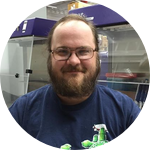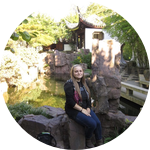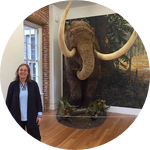About This Project
In NYC degraded sites are being reclaimed to restore biological diversity. Freshkills Park on Staten Island, once the world's largest landfill, is being recolonized by native ribbed mussels that play key roles in water filtration and storm protection. Oysters also carry out these functions, and are being restored citywide, including at Soundview Park, Bronx River. This study implements environmental DNA analysis of these areas to better understand their overall biodiversity and restoration.
Ask the Scientists
Join The DiscussionWhat is the context of this research?
Biodiversity is the overall range of living things in a given area. When studying evolution and the history of a site, it is helpful to know what has lived there in the past, and what is there currently. This enables scientists and managers to get an idea of how our environment is changing, if it is healthy, or if its habitat is declining. Our environmental DNA analysis of Freshkills and Soundview Park waters uses techniques to collect genetic material from water and sediment at both restored and unrestored sites. This will allow us to characterize the overall biodiversity as well as the effects of restoration, with a focus on ribbed mussel communities in creeks of Freshkills Park, and restored oyster reefs at Soundview.
What is the significance of this project?
New York City is one of the world’s greatest metropolises, but coastal degradation and decimation of once widespread native bivalves have helped disrupt its ecology. Pollution, habitat loss, overharvest, and disease have contributed to bivalve declines. Restoring oysters and ribbed mussels is important for protecting against storms, improving water quality, countering invasive species and disease, and sustaining fisheries and ecosystems. Freshkills Park, for example, covers over 2,000 acres, a major portion of our community representing key habitat for diverse wildlife. It is crucial that we understand whether restoration is creating healthier and greener communities for our children through monitoring. This eDNA analysis will aid in evaluation and adaptive management of these efforts.
What are the goals of the project?
Our goal is to carry out a comprehensive eDNA aquatic biodiversity survey of Freshkills and Soundview Parks. In doing so, we put ourselves in a position to better understand the effectiveness of our restoration efforts, and contribute to a healthier environment. This project will expand a pilot effort on previously restored oyster reefs and paired control sites at Soundview Park in the Bronx-Harlem River watershed. The second site spans one acre planned for restoration of ribbed mussel living shoreline, and a paired control site, in eroded tidal salt marshes of Freshkills. By assessing two different habitats, a river and a salt marsh, and using oysters or ribbed mussels respectively as bivalve ecosystem engineers, we broaden the project impacts and applications for other areas.
Budget
Once our eDNA samples have been collected, they must be processed. This processing is done so that all the DNA collected from the environment can be sequenced. First, we extract DNA from the environmental sample using Mobio PowerWater or PowerSoil kits and other disposable lab materials. Then, we send the extracts out for advanced professional next-generation sequencing and bioinformatics. The computer analysis cleans up and then analyzes the sequences, so that we can have a proper biodiversity analysis of the Parks.
Meet the Team
Team Bio
For more information on the Naro-Maciel lab, please see:
http://csivc.csi.cuny.edu/Eugenia.NaroMaciel/files/Naro-Maciel_Laboratory/Home.html
Google Scholar: http://scholar.google.com/citations?user=HFKhlQkAAAAJ
Research Gate: http://www.researchgate.net/profile/Eugenia_Naro-Maciel/
Watch us on NY1: http://www.youtube.com/watch?v=th1IQpkH9oQ
https://www.youtube.com/watch?v=18zascsSXCU
Joshua Seidman
I am 21 years old and attend The College of Staten Island. I am currently a Senior and plan to graduate in June of 2016 with a Bachelors of Science in Biology. After graduating I plan to apply to Veterinary School.
Seth Wollney
Seth Wollney is a doctoral student at the College of Staten Island, CUNY working on freshwater biodiversity inventories using environmental DNA collection. Please see my experiment.com site, "An environmental DNA (eDNA) approach to discovering life in NYC Ponds".
Irena Werner
Currently I am in my last semester of graduate school towards my M.S. in Environmental Science at the College of Staten Island, City University of New York. I have done Environmental DNA research at restored oyster reef at Soundview Park in the Bronx. Please see my experiment.com site: "Assessing oyster restoration using morphological records and next-generation sequencing".
Eugenia Naro-Maciel
I began working with conservation education and research in the early 90’s. A graduate of Yale University with a PhD from Columbia University, I served as a Post-Doctoral Fellow and then Research Scientist at the Center for Biodiversity and Conservation of the American Museum of Natural History, where I am now a Research Associate. In 2010 I joined the College of Staten Island, City University of New York (CSI, CUNY) as an Assistant Professor of Biology, where my research focuses on aquatic conservation genetics.
Lab Notes
Nothing posted yet.
Project Backers
- 6Backers
- 5%Funded
- $90Total Donations
- $15.00Average Donation



